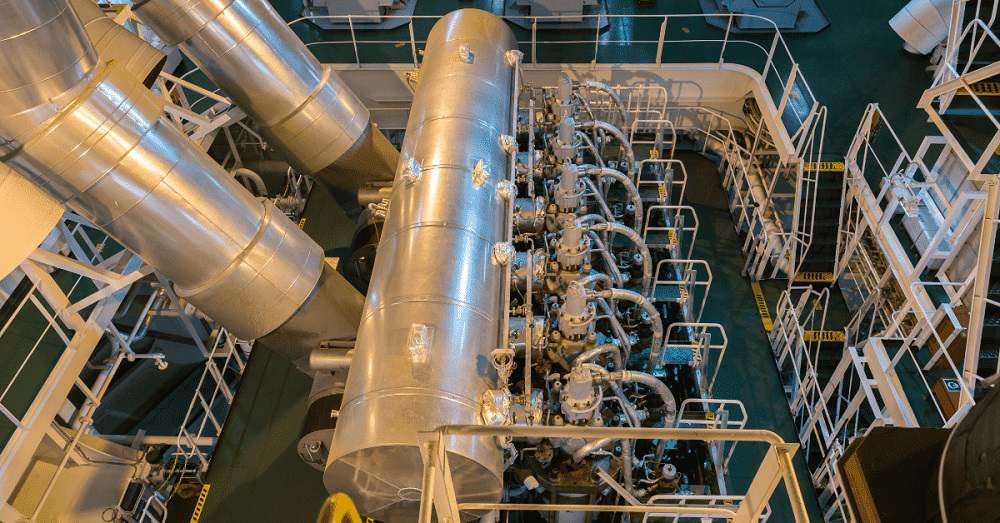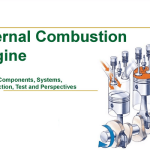The best thing about being a marine engineer on a ship is controlling the most powerful thing in the world ever created by man- the ship’s main propulsion engine.
The Wartsila Sulzer RT-Flex 96 C is the world biggest and most powerful engine ever made with an output of approx 80000 KW or 108900 BHP.
The overall operation of the ship is highly dependent on the performance of its main propulsion engine, measured in terms of its power rating.
There are several terminologies for “Power” rating used for Marine Propulsion Engine and each of these gives different value of engine performance under various parameters and situations.

Representation Image
Following is the list of “Power” Terminologies used for a Marine Propulsion Engine on board ship:
1 . Effective Power: The Power available at the output side of the engine i.e. at crankshaft flange of the engine which connects it with the flywheel and rest of the intermediate shaft. It can be said that this is the developed power by the engine available to the flywheel. Effective power is determined by an engine’s size and by its mechanical efficiency.
Effective power estimation can be done by two methods:
1. Speed and torque measurement – using the propulsion shaft arrangement
2. Engine mean indicated pressure measurement – using the in-cylinder pressure transducer. This method is preferred if non-direct propulsion unit is present (i.e. gearbox is installed)
2 . Rated Power: It is the continuous effective power provided by the manufacturer of the engine for a desired or rated RPM of the crankshaft. Rated power includes the loads which act on the engine due to the auxiliary system running from the engine power. One of the most important factors for selection of an engine i.e. MCR (Maximum Continuous Rating) is determined from rated power
3 . Indicated Horse Power: The actual power generated inside the combustion chamber of the engine by combustion of fuel is IHP. Hence it forms the basis of evaluation of combustion efficiency or the heat release in the cylinder. It is calculated based on the design of the engine using a theoretical formula:
PxLxAxN
4500
Where P- Mean indicated pressure of the cylinder
L- Stroke of the engine
A- Cross Sectional Area of the engine cylinder
N- Speed of the engine in RPM
4500 is a constant for conversion.
In this calculation, the frictional losses are not considered. Since it is calculated from indicated pressure of the engine, it is called Indicated Horse Power or IHP and is used for calculating mechanical efficiency of the engine
4 . Shaft Horse Power: The horsepower delivered to a propeller shaft before being converted into thrust by the propeller. It is measured by an instrument known as torsion meter which is available on board.
Sp = 2pient
t- torque by torsionmeter
n- Rev Per Second of the engine
5 . Brake Horse Power: Brake Horsepower measures the HP of an engine without considering the loss in power that is caused by auxiliaries attached to the engine, such as the shaft generator, alternator, gearbox, and other auxiliary parts. This is the power measured at the crankshaft with the brake dynamometer and is always higher than the shaft horsepower. This is because the power available at shaft accounts for frictional and mechanical losses. The “brake” comes in as the machine used to measure the power is brake dynamometer.
6 . Gross Power: Continuous effective power provided by the manufacturer for a given RPM using defined number of auxiliaries at normal service running condition without any overloading of the engine.
7 . Continuous Power: It is the BHP measured at the power take off the end when the engine is running at continuous safe operation range outside any time limit. This is provided by the supplier.
8 . Overload Power: It is the power excess of effective power than the rated power for a short period of time when the same auxiliaries are used under similar service condition for a limited period.
9 . Minimum Power: The guaranteed minimum or lowermost power value by the manufacturer for an approximate crankshaft RPM is the minimum power of the engine. The total installed MCR of all main propulsion engines should not be less than the minimum power line value, where MCR is the value specified on the EIAPP Certificate. Engine makers has to follow IMO guidelines for determining minimum propulsion power to maintain the manoeuvrability of ships in adverse conditions.
10 . Astern Output Power: The maximum power engine can generate when running in the astern direction at the safe condition. The astern output power of the engine is always less than output power in ahead direction. This is because the propeller thrust adds to the force on the rudder when going ahead, but in astern that thrust is lost. Propeller blade section is designed for maximum efficiency in ahead. In astern direction, the angle of attack is high on the back of the blade.
11 . Maximum Continuous Rating or MCR: It is the maximum power output engine can produce while running continuously at safe limits and conditions. It is specified on the engine nameplate and in the Technical File of the marine diesel engine. Important engine parameters such as specific fuel consumption, engine performance etc. are derived using %MCR rating of the engine. Equipment like VIT also works in conjunction with the MCR rating of the engine to achieve better fuel efficiency.
12 . Standard Rating: This is the power output of the engine at normal service speed which gives the highest economical efficiency, thermal and mechanical efficiency. At this speed, the wear down of the engine is at the minimum rate.
13 . Power to weight ratio: Power to weight ratio is perhaps the most important criterion used when choosing an engine for a type of ship. With ships become ultra large in size (VLCC, ULCC, 20k TEU ships etc.), their heavyweight results in higher displacement equals lower speed.
By using equivalent horsepower in a smaller-sized engine, engine compartments can be made smaller, allowing greater cargo capacity, while maintaining high-speed capability. Hence to get better and efficient performance from the ship, it is recommended to have high power to weight ratio.
14 . Main Propulsion Power: The total power supplied by the prime mover/s installed on a ship to provide propulsion. It does not include the power units integrated into the propulsion unit which is not intended to provide propulsion during normal operation, e.g. shaft-driven generators.



Comments are closed